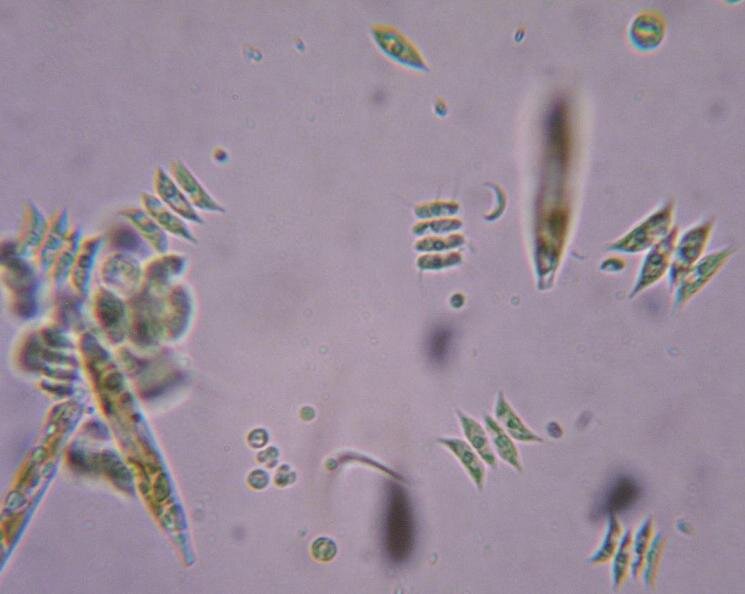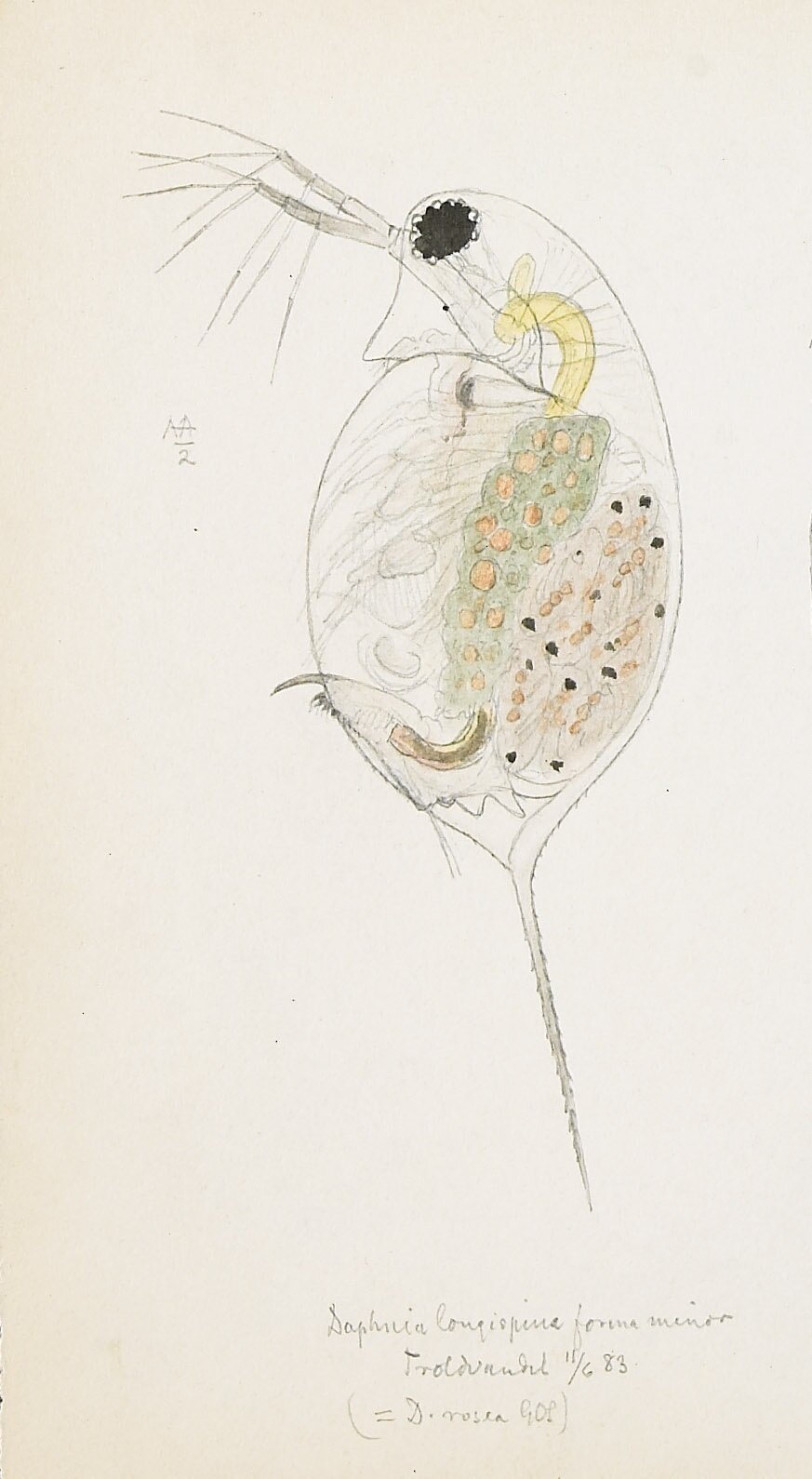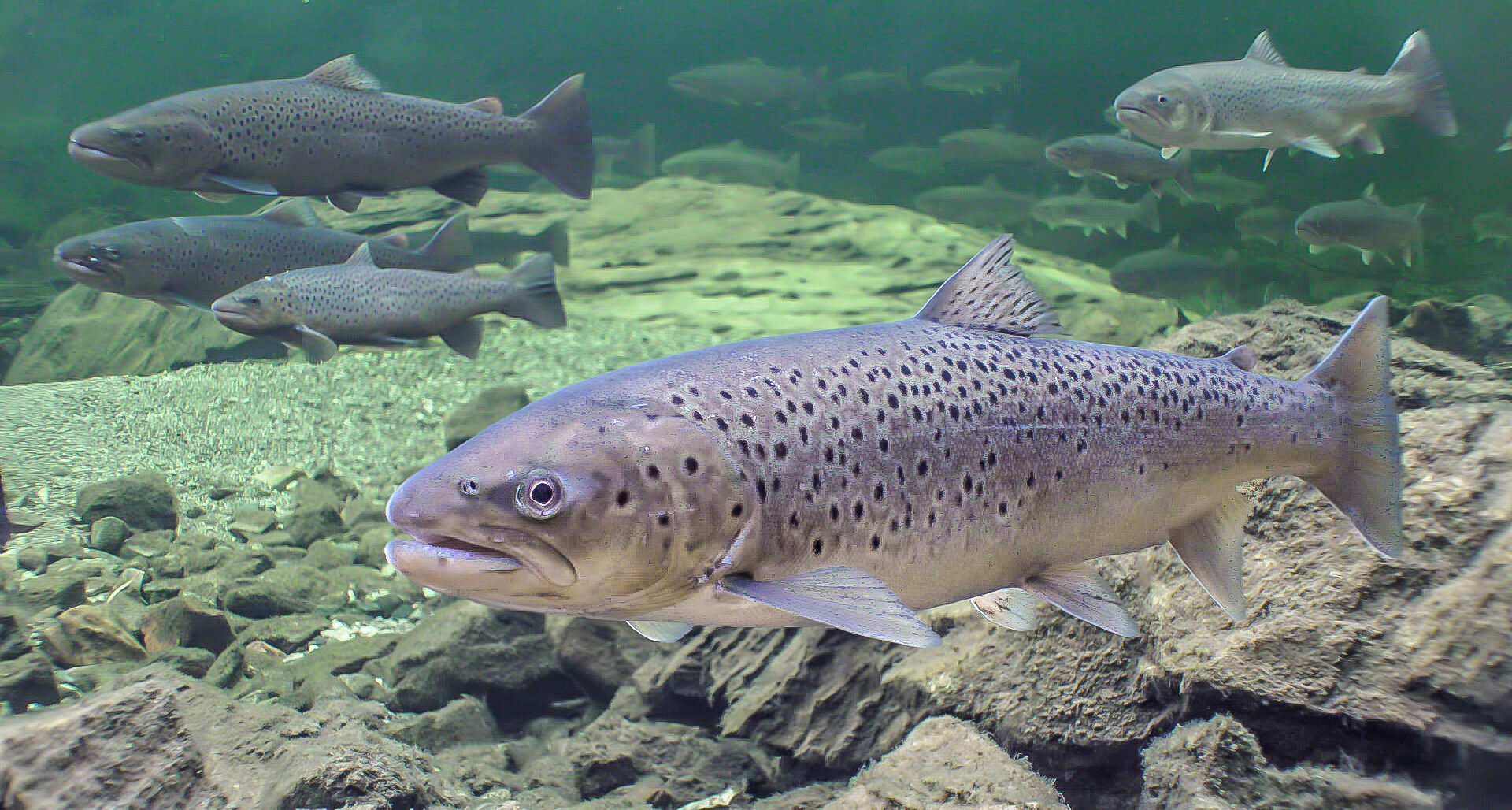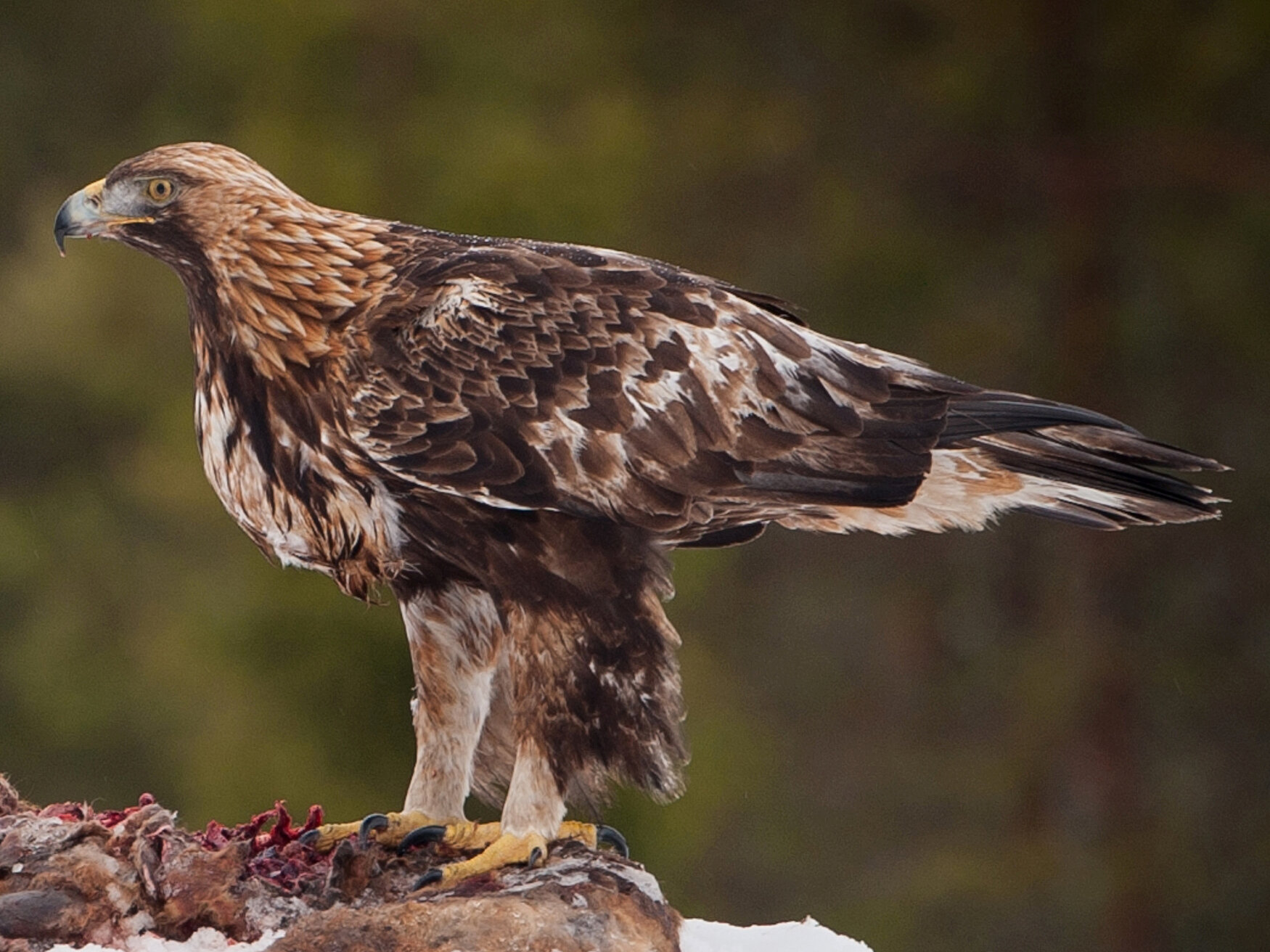Interaction in nature: food webs
In this assignment, you will learn what a food web is and how it differs from a food chain.
Competency goals for grade 7 Science
- explore and describe different food webs and use this to discuss interactions in nature.
Hegren likes to catch and eat trout.
Food chain
In the wild, animals have to find their own food. They can eat both plants and other animals. In water, there are often tiny algae, such as green algae. This is called phytoplankton. They can be so small that we can't see them. These "plants" can be eaten by slightly larger animals in the water, such as small water fleas (often called daphnia). Trout love to eat water fleas. The trout can be eaten by a golden eagle. Such an interaction, where small plants or animals are eaten by larger animals, is called a food chain.
We can illustrate the food chain like this: Green algae -> water flea -> sea trout -> golden eagle.
Source/photo: Green algae: Simon Andrews, CC BY-SA 2.5, Water flea: G. O. Sars, Sea trout: Arnt Mollan, Golden eagle: Jarrko Järvinen, CC BY-SA 2.0.
Commercial network
When animals hunt for food, they don't just eat one type of food. They can eat many different plants and/or prey. There are also many different animals that hunt them.
This kind of interaction cannot be explained by using the word food chain. Nature is more complicated than that. A food web is much more explanatory. The food web shows how different food chains are connected.
The illustration below shows a business network.
Figure of Pelagic food web in Mjøsa. At the top of the food web is the trout. Beneath the trout are cusk, herring, mysis, zooplankton and phytoplankton. The figure shows with arrows that this is not a food chain, but a food web. Several species are dependent on each other. Source: Eirik Fjeld, NIVA
Task
1. Draw a food chain with at least four species.
2. Can we humans be part of a food chain? Create a food chain that includes humans.
3. Can you draw a food web with species other than the ones you see in the image above?
4. What do you think would happen if one of the species disappeared?
What does...
Food chain: a series of organisms/species where each species eats the species below it in the food chain. It is itself eaten by the species above it.
Food web: the connection between organisms in the ecosystem.
For the teacher
The assignment on food chains and food webs can be a starting point for further work on biodiversity. Here is a suggestion for an activity after the students have worked on the assignments:
1) Divide the students into groups. Give each student one of the "species" below and ask them to line up in food chains. They should hold the hand of the one they want to eat/be eaten by. Here you can also use the food chains the pupils have created themselves as a starting point.
Green algae, water flea, trout, golden eagle
2) Let the group choose their own plants or animals and ask the students to line up in a food web.
Student booklet
The Nasjonalt villakssenter works for a stronger wild salmon and wants to promote the stream as an educational resource. Bring experiences from the classroom and put them in context with experiences outside. Many schools in Norway have a local stream. Even in our largest cities, there are streams that can be visited. Contact us for assistance, tips and professional support.
The student booklet "Who lives in your river?" can help with both preparation and follow-up work.








